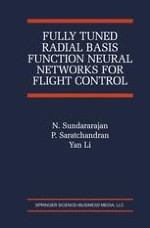Fully Tuned Radial Basis Function Neural Networks for Flight Control presents the use of the Radial Basis Function (RBF) neural networks for adaptive control of nonlinear systems with emphasis on flight control applications. A Lyapunov synthesis approach is used to derive the tuning rules for the RBF controller parameters in order to guarantee the stability of the closed loop system. Unlike previous methods that tune only the weights of the RBF network, this book presents the derivation of the tuning law for tuning the centers, widths, and weights of the RBF network, and compares the results with existing algorithms. It also includes a detailed review of system identification, including indirect and direct adaptive control of nonlinear systems using neural networks.
Fully Tuned Radial Basis Function Neural Networks for Flight Control is an excellent resource for professionals using neural adaptive controllers for flight control applications.
